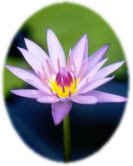
Nadi is a tubular organ of the body like an artery or a vein for the passage of prana or energy. A nadi has three layers like an insulated electric wire. The innermost layer is called sira, the middle layer damani and the entire organ as well as the outer layer is called nadi.
Sodhana meaning purifying or cleansing, so the object of Nadi Sodhana Pranayama is the purification of the nerves. A little obstruction in a water pipe can cut off the supply completely. A little obstruction in the nerves can cause great discomfort and paralyse a limb or organ.
Alternate Nostril Breathing is also known as Anuloma Viloma.
The principal benefit of practising Alternate Nostril Breathing is that it strengthens the respiratory system. If exhalation is twice as long as inhalation, stale air and waste products are drained and expelled from the lungs, and from the entire body. Alternate Nostril Breathing calms and balances the mind; you should try to perform at least 10 rounds daily.
As you become more advanced, the "count" of the exercise may be done, but always in a ratio of 1-4-2. This means that for every second that you inhale, you retain the breath 4 times as long, and exhale for twice as long. Never change this ratio. So you inhale to a count of "4", retain the breath to a count of "16" and exhale to a count of "8". You may also increase the number of rounds of alternate nostril breathing which is practised.
During retention, there is the highest rate of gaseous exchange in the lungs. Because of the increase in the pressure, more oxygen goes from the lungs into the blood and more CO2 (and other waste products) pass from the blood into the lungs for elimination during exhalation.
As you become more advanced, the "count" of the exercise may be done, but always in a ratio of 1-4-2. This means that for every second that you inhale, you retain the breath 4 times as long, and exhale for twice as long. Never change this ratio. So you inhale to a count of "4", retain the breath to a count of "16" and exhale to a count of "8". You may also increase the number of rounds of alternate nostril breathing which is practised.
During retention, there is the highest rate of gaseous exchange in the lungs. Because of the increase in the pressure, more oxygen goes from the lungs into the blood and more CO2 (and other waste products) pass from the blood into the lungs for elimination during exhalation.
Vishnu Mudra
For this traditional hand position, bend the two middle fingers of the right hand into the palm. The thumb is used to close the right nostril. The two end fingers is used to close the left nostril.

Technique
Begin with the right hand in the Vishnu Mudra position and the thumb on the right nostril. When exhaling, try to empty the lungs completely.
- Close the right nostril with the right thumb and exhale completely through the left nostril. Then inhale deeply through the same left nostril.
- Close the left nostril with your ring and little finger of the Vishnu Mudra, release the right nostril. Now exhale slowly and completely through the right nostril.
- Inhale deeply through the same (right) nostril. Then close the right nostril and exhale through the left nostril. This is one round of Alternate Nostril Breathing.
Note:
- This practice helps to maintain balance between Nadis.
- If you feel headache, heaviness of the head, giddiness, uneasiness etc, it means you are exerting much pressure on the lungs.
- The first symptoms of correct practice is the feeling of freshness, energy and lightness of the body and mind.
Effects
The blood receives a larger supply of oxygen in Nadi Sodhana than in normal breathing, so that one feels refreshed and the nerves are calmed and purified. The mind becomes still and lucid.
Note. - In the beginning the body perspires and shakes, while the thigh and arm muscles become tense. Such tension should be avoided.
Caution
- Persons suffering from high blood pressure or heart trouble should never attempt to hold their breath (kumbhaka). They can practise Nadi Sodhana Pranayama without retention (kumbhaka) with beneficial effect.
- Persons suffering from low blood pressure can do this pranayama with retention after inhalation (antara kumbhaka) only, with beneficial effects.
Physical :
It promotes balance between the two nostrils apart from cleansing the nasal tract. It increases the vitality. Metabolic rate decreases as in case of all other Pranayama practices. It increases the digestive fire and appetite.
Therapeutic :
It lowers the levels of stress and anxiety by harmonising the pranas. It is beneficial in respiratory disorders such as Bronchial asthma, Nasal allergy, Bronchitis etc.
Spiritual :
It induces tranquility, clarity of thought and concentration. It clears pranic blockages and balances Ida and Pingala nadis, causing Shusumna nadi to flow which leads to deep states of meditation and spiritual awakening. It helps to maintain Brahmacharya which is a pre-requisite for spiritual progress.
Common Mistakes
- Back is not straight, head droops.
- The chest is dropped with exhalation.
- The breath is not smooth.
Source from Light on Yoga by B.K.S. Iyengar
Yoga Mind & Body by Sivananda Vedanta Centre
Integrated Approach of Yoga Therapy for Positive Health by
Dr R Nagarathna & Dr H R Nagendra
The Sivananda Yoga Training Manual

































